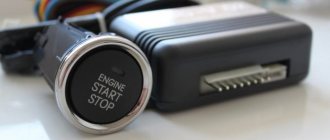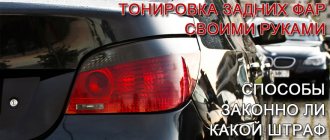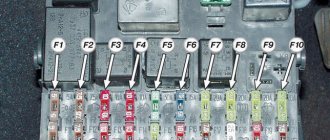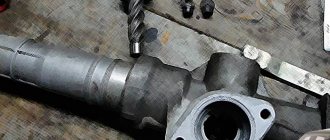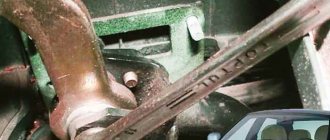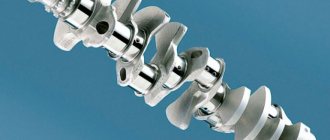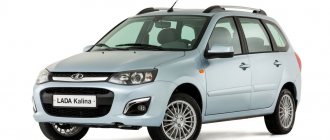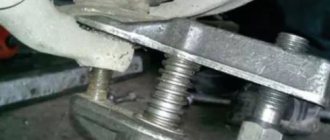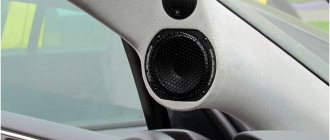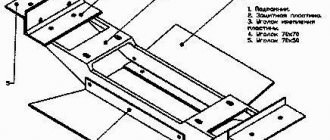Hello, dear car enthusiasts! We are considering a rather sensitive topic, to which many may react extremely ambiguously, in some places negatively. After all, we are talking about a flashing brake light.
Considering the capabilities of online stores, as well as the skills of some garage craftsmen, you can buy or assemble almost anything with your own hands.
But before you make your feet with a flashing effect, you should think about the feasibility and legality of such upgrades. Not everyone knows how traffic police officers will react to flashing lights.
What the laws and regulations say
The modified pattern, which turns a constantly lit brake light into a flashing one, raises many questions.
It would seem that if you can buy a ready-made controller from Aliexpress or order it from other stores, then there is nothing illegal about it. It’s even possible to hang a strobe light on a car. The only question is what consequences this will have.
The first thing you should do is look at the traffic rules. Oddly enough, not a word is said here about a ban on the use of such devices. After all, when the stops are blinking, the color of the flashlight itself does not change. Therefore, there is no corpus delicti as such. Everything is legal. But the light is blinking. And this is a reason to impose a ban.
Although the traffic rules do not say anything, there are also technical regulations. And here it is precisely stated that a flashing brake light is a prohibited type of tuning. Appendix 8 clearly states that no car lights, except turn signals and emergency lights, should blink.
Results of the work carried out
There are several options for creating such an intermittent stop signal. Both how the scheme will work and what the result will be are different. At the same time, any of the options can be easily implemented independently; both the simplicity of the electrical circuits and the low cost of the components will help.
The absence of the need to use programmable controllers can also be recorded as an asset.
Now it’s up to you to choose the most suitable option and organize revisions. We wish you that the information received will be useful to you, and the result will meet your expectations!
Possible punishment
There is nothing in the traffic rules, but there is something in the technical regulations. Hence the logical question about whether they can be punished for flashing lights, and what the possible fine is in such a situation.
Here, traffic police officers will build on Article 12.5 of the current Administrative Code. The emphasis is on the fact that a flashing stop indicates an incorrect operating mode of the equipment. As a result, a fine of 500 rubles. But in addition, the driver may also suffer for making changes to the design of his vehicle.
Testing homemade LED headlights
After about 2 hours of testing, the system reached a temperature of about 35 degrees, that is, despite the use of resistors instead of chip inverters, much less than an equivalent incandescent lamp.
The uniformity of backlight shades is not ideal. The lower part of the headlights is good - the diodes shine perfectly with rows of lenses and illuminate evenly. Higher - due to the tilt of the glass LEDs, the light begins to scatter a little, and the brightness depends slightly on the viewing angle.
It would have been possible to customize the LED strips in stages, but the priority was to provide a reasonable cost-to-effort ratio that would completely satisfy the car owner.
- After a month of testing, when the car traveled about 2 thousand kilometers, not a single LED burned out. Let's see how it goes next.
- After a year of driving, when the car traveled about 10,000 km, one diode was burned out and one strip went out. Probably turned out to be defective.
The time investment in these car tail lights is 3 days to 2-3 hours a day, and the cost of materials for both lamps is 3000 rubles - this is very good.
To bet or not
This is a personal matter for everyone.
And you have your own opinion on this matter. Some are sure that flashing stop signs distract attention and cause a feeling of confusion among drivers moving behind such cars. After all, the intentions of the motorist are not always clear.
It also happens that, due to the flickering, the motorist behind does not have time to brake in time, because he glances at the feet exactly at the moment when the lamp goes out.
There is also the opposite opinion, according to which flickering makes you be more attentive and vigilant. Fans of this theory cite design solutions on Formula 1 cars as an example. After all, their feet also blink during active or sudden braking.
You decide. But remember that such changes can easily be classified as illegal. As a result, the driver faces a fine. And not only the modest 500 rubles. For illegal design changes, sanctions can be much more serious.
Here it would not be amiss to remember why the brake lights do not light up and what this may be connected with.
How to make the brake lights flash
- Registration
- Entrance
- To the beginning of the forum
- Forum Rules
- Old design
- FAQ
- Search
- Users
- List of forums AUTOLADA.RU
- Additional equipment, tuning
Guys, please advise me how to make the additional LED brake light on my car not just light up, but blink.
What kind of gear should be put in there to make this happen? This is what I did for myself:
My rear fog light is flashing. a year ago a freak drove into me and said he didn’t see the difference between the dimensions and brake lights. Now there is definitely a difference.
This is the general principle:
This is what I did for myself:
My rear fog light is flashing. a year ago a freak drove into me and said he didn’t see the difference between the dimensions and brake lights. Now there is definitely a difference.
on the contrary, safety increases and attracts attention!
And increases the anger towards you behind
Yes, you can make it blink, or better yet, have a sledgehammer climb out and hammer 2 meters behind the car.
There is a standard! The red brake light is on, not flashing! All people are used to this, and when something flashes there or suddenly the foglights light up, you just want to go out and blow up this whole New Year's show. Even if everything is beautiful and not annoying, the person is distracted and may miss the moment of braking.
I saw one on the Moscow Ring Road on a penny, so he confused the right and left taillights, and in place of the stops he had turn signals (which were correspondingly yellow). It’s very uncomfortable to travel like this, and I didn’t even immediately understand the reason (I myself rode the spear for 5 years). The lady was driving behind him in a Citroen, because she realized that his feet were yellow, so the brake was on the floor and it was at 110, and behind her the others were also on the floor. I still don’t understand how the train didn’t get hitched, probably the lady wasn’t completely stupid and didn’t slow down until it came to a complete stop.
Guys, please advise me how to make the additional LED brake light on my car not just light up, but blink. What kind of gear should be put in there to make this happen?
On the Volga, people like to connect this blinker. Anger quickly arises, turning into hatred, in relation to such cars, in a traffic jam
How to bleed the power steering with your own hands: simple instructions
Experience shows that a flashing brake light is most often the prerogative of domestic cars that are actively used for tuning. These are cars such as VAZ 2110, Lada Kalina, Lada Priora, etc.
But it’s quite difficult to imagine the owner of a new foreign car with such tuning. Although situations are different.
There are several options for how to implement flashing stops on a car. Let's look at 2 of them.
With relay
The easiest way to implement the idea of flashing brake lights is to use a turn signal relay.
Only here it is worth immediately emphasizing that such a scheme is not always characterized by increased reliability. A scenario in which the relay fails cannot be ruled out. This largely depends on the build quality. Therefore, motorists are advised to initially choose high-quality relays. And the best option would be a rotary relay from the car on which the tuning is performed.
Now to the question of how to properly connect the relay. This is done through standard wiring. You just need to connect the rotary relay to the stop. Before insulation and assembly, it is recommended to check the system for functionality.
The main disadvantage of this method is that the stop light will flash continuously.
It is because of this that alternative schemes have gained the most popularity.
Using a microcircuit
There are various microcircuits. Among those in demand for the implementation of a flashing stop is a circuit of the K561TL1 type.
On its basis, a foot control unit is created. If everything is done correctly, the work scheme can be implemented to your taste and your own needs. To change the number of blinks, simply change the capacitance of capacitor C1, which is part of the microcircuit. The resistor resistance parameters also change.
Circuit C2-R2 in the microcircuit will be responsible for the frequency of flashes that occur. To avoid problems on the road, experienced craftsmen advise adding an instant shutdown button here. So the traffic police officers simply won’t see your flashing light, and therefore won’t be able to punish you for such tuning.
You can implement quick shutdown in 2 ways:
- Install a special button with a resistor directly in the cabin. The parameters of the latter should be 1 kOhm. By pressing this button, current will be supplied bypassing the microcircuit used, and then the feet will be able to function in standard mode;
- Use a regular switch. This way the brake light can switch and switch to normal power. This scheme is considered simpler.
Which one is more suitable for you, decide for yourself.
Connecting LEDs to car wiring
LED headlight circuit with resistors
Diagram of LED headlights with stabilizers
All three segments of the headlight are mounted on a common board made of 1.5 mm thick fiberglass, cut into a shape that exactly matches the contour of the rear headlights. After testing several types of LEDs, Super Flux (with lens) with 80 degree beam angle, 5mm diameter and 20mA current was applied.
The diodes themselves are mounted on a universal board with current stabilization based on resistors, instead of a special driver, and this thing looks a little careless, only it is hidden between the reflector and the diffuser, so only the geometrically correct configuration of the modules is important.
The three panels are connected in parallel and powered directly from the car's 12V wiring using an adapter simulating a lamp base (made from a burnt out light bulb).
The design of the panel itself is 4 LEDs connected in series (horizontal lines), each line has its own resistor (180 Ohm / 0.25 W) limiting the current. The lines are connected in parallel - everything is powered by a rectifier diode connected to the positive wire.
Weaker parking lights are implemented by supplying power from a second rectifier diode in series with a 390 ohm/0.5 W resistor.
Everything draws current in the 0.5A range (a regular light bulb is about 2A). The diodes operate under ideal conditions - a voltage of 2.2 V and a current of 20 mA are almost nominal recommended values. Now the durability of the entire lamp will depend only on the reliability of the LEDs themselves. The use of a limiting resistor of 300 - 470 Ohms for each LED makes its operation essentially eternal, since the permissible current will not be exceeded, even when the voltage increases abruptly to, for example, 18 V, which is already a definite malfunction of the car. When there are several LEDs in series across this resistance, there is even more confidence in longevity.
Useful: Diagram of an excellent inverter 12 V - 220 V
This may not be a perfect solution, but with a well-functioning auto voltage regulator and a functional battery, voltage spikes should not exceed 14.8 - 12.8 = 2 V or 0.5 V per diode.
Why choose LED
The diode as the main light source in a vehicle lighting system has become very popular for the following reasons:
- excellent luminous flux, which has favorable technical characteristics;
- the diode operates at a low voltage, which allows you to power such a backlight from a car battery without any problems;
- long service life, which, if installed correctly, is about 10 years;
- the diode practically does not heat up during operation;
- resistance of the light source to mechanical stress and vibration. Moreover, vibration resistance is very important for a car, since while it is moving along the road surface, many parts of the body are subjected to minor vibration influences.
Diodes
At the same time, the most important advantage of a diode light source is its color variety. As a result, the illumination of the rear headlights can be made very diverse, which will give your car more uniqueness and originality. Moreover, such lighting can be installed with your own hands even on a domestic car without much difficulty. Unlike old lighting installations, LED lights do not dazzle the eyes, but create a soft glow. Thanks to its excellent characteristics, the light created by the diode will be visible from several kilometers away. The availability of LED products makes this type of tuning not only the most profitable, but also an affordable way to effectively and practically illuminate a car. When done correctly, you will have beautiful taillights that reflect your personality.
Reasons for tuning headlights
You can make LED rear lights for your car not only to improve the appearance of the vehicle and improve the luminous characteristics of the headlights, but also to prevent the lighting device from failing. It makes sense to carry out such headlight tuning in the following situations:
- reduction in the quality of the glow of devices;
- a constantly ongoing oxidation process in lighting fixtures;
- burnout of backlight bulbs;
- loss of contact in the device;
- various problems with the lighting fixture.
An excellent solution to all of the above situations would be to install LEDs yourself. During the installation of new lighting elements, you can simultaneously correct all existing minor problems that you can fix on your own.
What you need to know about LED headlights
In modern cars, LED lamps are made from an array of diodes that generate light through the so-called electroluminescence effect. The electroluminescence effect should be understood as the optical-electric phenomenon of glow of crystals and gases of phosphorus or other structures when exposed to an electric field or current.
Note! This kind of technology makes it possible to maintain low energy consumption compared to other lighting methods implemented using fluorescent and neon bulbs.
Modern LED headlights
The diode, which is built into the rear lights of the car, allows you to increase the visible distance on the roadway by two and a half meters. This increase in the visible distance gives the driver extra seconds, which will allow him to better navigate the road, avoiding dangerous maneuvers and situations that pose a threat to the life and health of people. As a result, diode tuning will make it possible to achieve greater safety of movement on the roadway at night. In addition, the diode has a lot of positive characteristics, which we discussed above. Thanks to them, the homemade LED flashlight increases the reliability of both the rear lighting and the vehicle lighting system as a whole. Thus, LED car lights are an excellent compromise between the distance required to identify a car on the road and the situation of blinding the driver behind. As we can see, the decision to independently tune the rear lights of the car and use a diode for this (different types of LED products) will be a huge plus and will make it safer for the vehicle to be on the road surface!
Things to remember while working
Before you start making an LED car light with your own hands, you need to know the following nuances of this work:
- each diode that will be installed in the headlight must be assembled in a group in parallel with series resistors (protection and equalizing);
- It is recommended to use only light sources with high brightness;
High brightness LEDs
- You also need special reflectors with which you can increase the brightness of the light sources. This is due to the fact that the power of such light sources is not enough to create a luminous flux on the same level as conventional incandescent lamps;
- you need to use colored plastic caps that actively absorb coherent radiation from the diodes. With the help of such caps, you can match the frequency of the light source.
In this regard, we can conclude that creating a homemade high-quality LED flashlight for a car is possible, but only if you strictly follow the assembly instructions and know the important nuances of the work.
